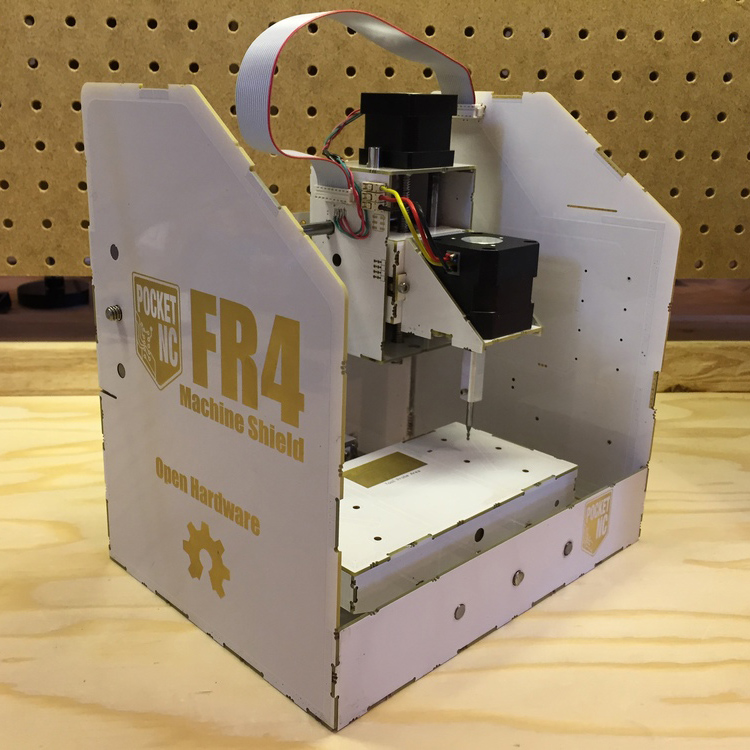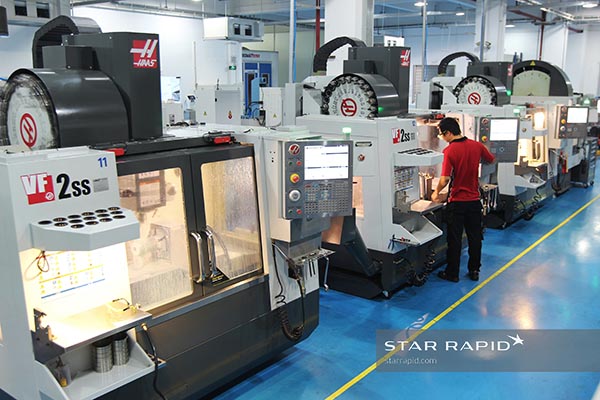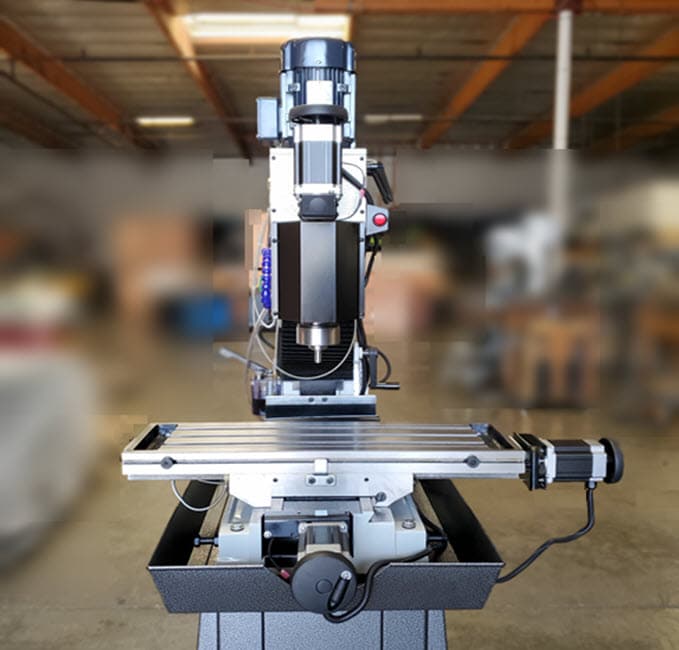Table of Contents
In the world of manufacturing and engineering, CNC mills are a popular tool for cutting a variety of materials. But what about FR4, a type of fiberglass material commonly used in electronics? Can a CNC mill be used to cut FR4?
The short answer is yes, a CNC mill can be used to cut FR4. However, there are certain considerations and techniques that must be employed to ensure a successful outcome. In this article, we will explore the ins and outs of cutting FR4 with a CNC mill, including the necessary equipment, cutting parameters, and best practices. So if you’re curious about using a CNC mill for FR4 cutting, read on to learn more!
Can You Use a CNC Mill to Cut a Fr4?
If you’re in the world of electronics, you’re probably already familiar with FR4. This material is the most commonly used substrate for printed circuit boards (PCBs). And if you’re in the business of making PCBs, you may have wondered if you can use a CNC mill to cut FR4. The answer is yes, you can! In this article, we’ll explore how you can use a CNC mill to cut FR4 and what some of the benefits and limitations are.
What is FR4?
FR4 is a composite material made from woven fiberglass cloth and epoxy resin. It’s a popular choice for PCB substrates because it has excellent electrical insulation properties, good dimensional stability, and high mechanical strength. FR4 is also very affordable and widely available.
How Does a CNC Mill Cut FR4?
A CNC mill is a machine that uses computer numerical control (CNC) to control the movement of a cutting tool. The cutting tool is usually a rotating end mill or router bit. To cut FR4, the CNC mill moves the cutting tool over the surface of the FR4, removing material in a series of passes until the desired shape is achieved.
To cut FR4, you’ll need to use a cutting tool with a carbide or diamond tip. These materials are very hard and can withstand the wear and tear of cutting through FR4. You’ll also need to use a cutting speed and feed rate that’s appropriate for the material.
The Benefits of Using a CNC Mill to Cut FR4
Using a CNC mill to cut FR4 has several benefits. First, it allows you to create complex shapes and designs that would be difficult or impossible to achieve with manual cutting tools. Second, it’s much faster than manual cutting, which can save you time and money. Finally, using a CNC mill ensures that your cuts are precise and accurate, which is essential for creating high-quality PCBs.
The Limitations of Using a CNC Mill to Cut FR4
While there are many benefits to using a CNC mill to cut FR4, there are also some limitations to keep in mind. First, you’ll need to have access to a CNC mill, which can be expensive. Second, you’ll need to have some knowledge of CNC programming to create the tool paths necessary to cut your design. Finally, while a CNC mill can create precise cuts, it may not be suitable for creating features that are smaller than the diameter of your cutting tool.
The Costs of Using a CNC Mill to Cut FR4
The cost of using a CNC mill to cut FR4 will depend on several factors, including the complexity of your design, the size of your PCB, and the number of cuts required. You’ll also need to factor in the cost of the FR4 material itself, as well as any tooling or programming costs.
FR4 vs Other PCB Substrates
While FR4 is the most commonly used substrate for PCBs, there are other materials available that may be better suited to certain applications. For example, polyimide is a popular choice for flexible PCBs, while ceramic substrates are often used for high-temperature applications. When choosing a substrate for your PCB, it’s important to consider your specific requirements and choose the material that best meets your needs.
Conclusion
In conclusion, using a CNC mill to cut FR4 is a great way to create high-quality PCBs quickly and accurately. While there are some limitations and costs to consider, the benefits of using a CNC mill make it an attractive option for many electronics professionals. Whether you’re just getting started in the world of PCB design or you’re a seasoned pro, a CNC mill can help you take your designs to the next level.
Frequently Asked Questions
Here are some common questions regarding the use of CNC mill for cutting FR4:
Can a CNC mill be used to cut FR4?
Yes, a CNC mill can be used to cut FR4, which is a type of fiberglass material used in printed circuit boards (PCBs). However, it is important to use the right tools and settings for the job. FR4 is a very hard and abrasive material, which can quickly wear down cutting tools if they are not designed for this purpose.
Additionally, FR4 produces a lot of dust and debris when it is being cut, which can be hazardous to your health if you inhale it. Therefore, it is important to use proper safety equipment, such as a dust mask and safety goggles, when working with FR4.
What type of cutting tools are needed to cut FR4?
To cut FR4, you will need cutting tools that are specifically designed for this material. Carbide end mills are a popular choice for cutting FR4, as they are very hard and durable, and can withstand the abrasive nature of the material. However, it is important to use the right type of carbide end mill for the job, as different types are designed for different types of cutting operations.
In addition to carbide end mills, diamond-coated tools can also be used for cutting FR4. These tools are more expensive than carbide end mills, but they can offer a longer lifespan and better performance in certain applications.
What are some tips for cutting FR4 with a CNC mill?
When cutting FR4 with a CNC mill, there are several tips that can help ensure a successful and efficient cutting process. First, it is important to use the right cutting tools and settings for the job, as discussed above. Second, it is important to properly secure the FR4 material to the milling bed, using clamps or other holding devices.
Third, it is important to use a cutting lubricant or coolant to help reduce friction and heat during the cutting process, which can help prolong the life of the cutting tools and improve the quality of the cuts. Finally, it is important to clean up the dust and debris produced during the cutting process, using a vacuum or compressed air, to prevent it from accumulating in the machine or causing health hazards.
What are some common mistakes to avoid when cutting FR4 with a CNC mill?
There are several common mistakes that people make when cutting FR4 with a CNC mill, which can lead to poor results or even damage to the machine or cutting tools. One common mistake is using the wrong type of cutting tool or settings for the job, which can result in excessive wear or breakage of the tool, or a poor quality cut.
Another common mistake is not properly securing the FR4 material to the milling bed, which can result in movement or shifting of the material during the cutting process, leading to inaccurate cuts or damage to the machine. Finally, not using proper safety equipment, such as a dust mask or safety goggles, can expose you to hazardous dust and debris, which can be harmful to your health.
What are some alternative methods for cutting FR4?
While a CNC mill is a popular and effective method for cutting FR4, there are several alternative methods that can also be used. One alternative method is using a laser cutter, which can offer a precise and clean cut without producing as much dust and debris as a CNC mill.
Another alternative method is using a manual cutting tool, such as a hand-held router or saw, although this method may not be as precise or efficient as a CNC mill or laser cutter. Ultimately, the choice of cutting method will depend on the specific needs and requirements of your project, as well as the tools and resources available to you.
In conclusion, using a CNC mill to cut FR4 is not only possible but also highly recommended. With the right equipment and techniques, you can achieve precise and accurate cuts that meet your exact specifications. The use of a CNC mill also ensures that the cutting process is fast and efficient, saving you both time and money in the long run.
However, it is important to note that the success of your FR4 cutting project largely depends on your level of expertise and experience with using CNC mills. If you’re new to the process, it may be helpful to seek guidance from experienced professionals or to undergo training to avoid any costly mistakes.
Overall, utilizing a CNC mill to cut FR4 is a great way to achieve high-quality results that meet your specific needs. By investing in the right equipment and taking the time to master the process, you can unlock the full potential of this powerful tool and take your projects to the next level.
Request a quote today!
[contact-form-7 id="1578" title="Contact form"]
Please compress the file into a ZIP or RAR file before uploading. Alternatively, send through your RFQ by email.
enquires@unitymanufacture.com





